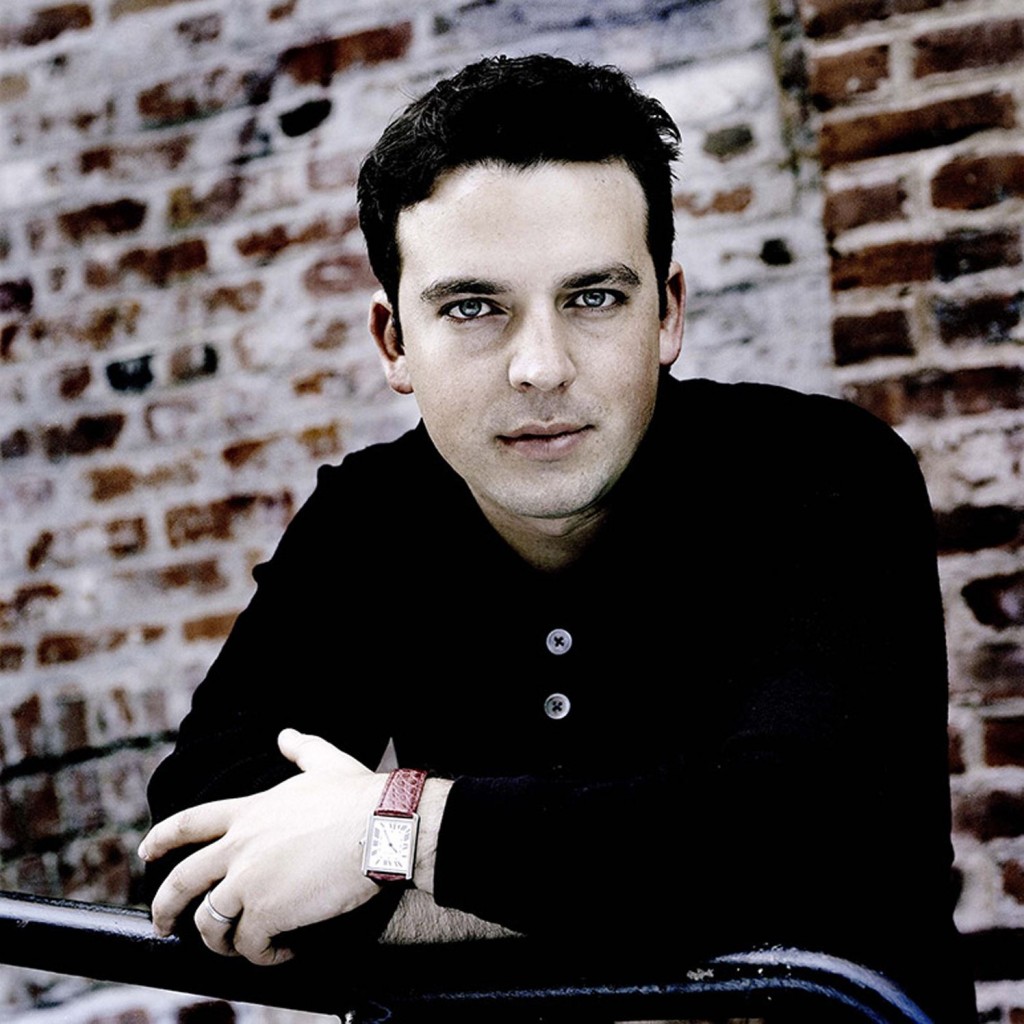Gaffigan leads New World Symphony in performances high on volume, short on subtlety
One has to hand it to Richard Strauss. Even 120 years after the German composer distilled his musical take on Friedrich Nietzsche in Also sprach Zarathustra, who else since has successfully mined a philosopher’s writings? Where is the Arthur Schopenhauer opera or the Bertrand Russell symphony?
Strauss’s epic tone poem was the main event at Saturday night’s concert by the New World Symphony, conducted by James Gaffigan, a program that also included works of Mozart and Cesar Franck. And while the sonic spectacle was well served at New World Center–and doubtless enjoyed by the large crowd outside for the Wallcast–those looking for more subtlety and nuance in the interpretations were likely to be disappointed.
Music inspired by the somber, ponderous writings of Nietzsche doesn’t exactly suggest a lighthearted frolic. But Strauss’s ability to deal with profound and complex themes in a quirky and subversive style makes his 35-minute tone poem a wild engaging ride, with its celebrated Sunrise opening, sonic audacity and whipcrack scoring for huge forces. Only in Strauss could the victory of Nietzsche’s Übermensch be celebrated in a sashaying Viennese waltz with obbligato violin.
Gaffigan, chief conductor of the Lucerne Symphony Orchestra, is an energetic podium figure with a decidedly theatrical style. He reveled in Strauss’s most richly scored sections, drawing massive majestic impact to the opening Sunrise, and unbridled string playing in “Of Joys and Passions.”
What was lacking was an essential compensating restraint in the contrasting sections’ subtleties. Gaffigan consistently ironed out the composer’s detailed markings for a flashy effect, ignoring the decrescendo swells in the opening section and quieter dynamics elsewhere.
Gaffigan’s emphatic, heavily legato style sacrificed point and precision when they were most needed. The subterranean double-basses that lead off the “Of Science” fugue sounded muddy and indistinct, and the final section’s unresolved bitonal questioning needed greater concentration and tonal polish.
The orchestra played well apart from a jarring split wind chord in the closing bars and a cello solo that veered briefly out of tune. The brass and timpani brought sonic splendor to the opening fanfare and Benjamin Carson invested the waltzing violin solos with apt Viennese flavor.
Mozart provided the centerpiece with Jeffrey Kahane as solo protagonist in the Piano Concerto No. 22 in E flat major, K.482.
Kahane proved a stylish Mozart hand, performing with fluid and elegant passagework and coaxing an expressive performance from the bright-toned Fazioli piano. Mozart left no cadenzas for this work since the ink was still wet on the page when the composer premiered it in 1785. Kahane’s own cadenzas, particularly one with timpani contributions in the first movement, weren’t entirely idiomatic but displayed a wry and distinctive individuality.
The subdued tragedy of the Andante’s theme and variations recalls Barbarina’s Act IV aria from The Marriage of Figaro, which Mozart was writing at the same time. Here Kahane’s limpid keyboard work was nicely supported by the New World woodwinds with notably characterful contributions from flutist Masha Popova and bassoonist Brenton Foster. Kahane brought out the simple child-like esprit of the finale with just the right intimate charm and delicacy.
Unfortunately, there were little of those qualities in Gaffigan’s accompaniment. While alertly coordinated with his soloist, the orchestral direction was consistently overloud and aggressive, showing scant in common with Kahane’s graceful style.
The evening began with a rarity in the form of Cesar Franck’s Le chausseur maudit or The Accursed Huntsman. The scenario tells of a royal who goes hunting on Sunday, despite warnings about doing so on the Sabbath, and meets a tragic fate. Franck’s 15-minute symphonic poem is also scored on a large scale, mixing the dark, primeval forest mystery of Weber with the kaleidoscopic scoring of Berlioz.
Gaffigan led a reading of fiery, driving vitality from the New World fellows, with especially rich playing from the cellos and full-blooded horn contributions in the galloping sections. Yet here too, Gaffigan consistently leaned toward the loud side of the spectrum and one would have liked more nuance and greater transparency in Franck’s weighty textures.
After the Strauss performance, Gaffigan ventured deep into the orchestra for prolonged acknowledgements and individual congratulations to numerous New World musicians, seeming to shake more hands than politicians in Iowa over the past two months.
The program will be repeated 2 p.m. Sunday. nws.edu; 305-673-3331
Posted in Performances
One Response to “Gaffigan leads New World Symphony in performances high on volume, short on subtlety”
Leave a Comment
Sun Jan 31, 2016
at 1:31 pm
1 Comment









Posted Feb 01, 2016 at 7:25 am by Mario
Totally agree; I don’t know if the problems with the Strauss were with the conductor or with an orchestra that every year has members leaving and new ones coming in. Two of the flutists, where intonation problems were obvious, are newbies.